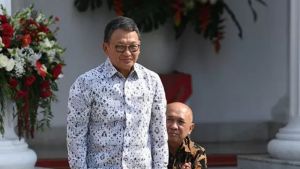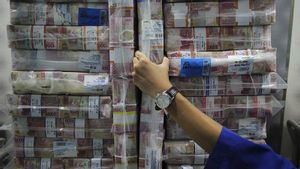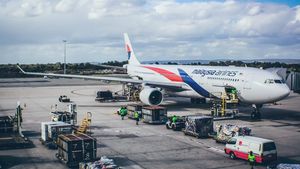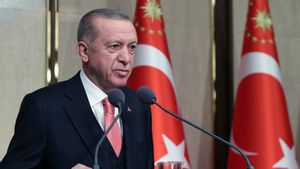JAKARTA - Deputy Minister of SOEs Pahala Nugraha Mansyuri said Indonesia's position as the presidency in this year's G20 is important to jointly push for a sustainable green energy transition.
The G20 presidency is an important moment to push for a green energy transition policy that is sustainable, efficient, easy, affordable, and concrete.
“A sustainable energy transition is inevitable. Almost all countries have started the green energy transition by gradually reducing fossil energy," he said in a statement quoted in Jakarta, Saturday, January 15.
He explained that climate change marked by an increase in global temperature of 1.5 degrees Celsius to 2.0 degrees Celsius made the world commit to reducing carbon emissions.

Therefore, according to Pahala, the energy transition must be done concretely, no longer rhetorically, as President Joko Widodo has mandated. Indonesia will develop a concrete new and renewable energy development roadmap along with a financing scheme.
Several concrete steps have been taken, namely by encouraging the creation of a national taxation system for carbon. Starting April 1, 2022, Indonesia will start imposing a carbon tax in accordance with the Law on the Harmonization of Tax Regulations (HPP).
The government also encourages various sustainable and green development projects. The Ministry of SOEs supports a greener Electric Power Supply Business Plan (RUPTL). "In the 2021-2030 RUPTL, the portion of electricity with renewable energy is 51.57 percent or the equivalent of 20,923 megawatts," said Pahala.
The Government of Indonesia has an energy transition roadmap for Indonesia which is contained in the Grand National Energy Strategy. In the roadmap, new and renewable energy is targeted to reach 23 percent in 2025 and reach 31 percent in 2050 in the energy mix.

In presenting clean energy in the context of creating national energy independence, local energy sources are needed, especially new and renewable energy, such as geothermal energy so that it can improve air quality and support the achievement of the national greenhouse gas emission reduction target.
The energy transition must continue even though there are still many challenges to be faced in the future. Pahala added that the government is focusing on developing geothermal as the largest portion of new and renewable energy. "We will develop geothermal because it is profitable in geothermal. The emission reduction target from state-owned companies is 85 million tons of carbon dioxide," he said.
Geothermal energy is Indonesia's mainstay because it can be used as a baseload. The cost of providing energy is also cheaper than other renewable energy, which is only 7.6-8 US cents per kWh.
"Compared with batteries from solar energy which are 12 US cents per kWh, geothermal is clearly cheaper, so the government considers geothermal has a unique potential to be developed," he added.
SEE ALSO:
The increase in the use of geothermal energy is also to reduce imports of national fuel because Indonesia's fuel consumption is around 1.2 million barrels per day. 40 percent of the fuel needs are supplied from imports.
Pahala said that his party was encouraging SOEs to optimize geothermal development in their own working areas. Moreover, currently, only 9.0 percent of the geothermal working area is producing with a capacity of only 1,900 megawatts. ''We still have 19 gigawatts of potential. We encourage Pertamina Geothermal Energy to develop geothermal areas," he said.
Pahala said that Singapore's Energy Market Authority (EMA) has announced that it will diversify its power sources through renewable energy generation of up to 4-gigawatt non-intermittent by 2035.
According to him, this potential is good for exports due to Indonesia's proximity to Singapore. This opportunity must be seized quickly and exploited.
Pahala reminded that the fast movement of neighboring countries must also be a concern for SOEs so that they do not lag behind in the supply of new and renewable energy. "For that, a strong synergy is needed between PNRE, PGE, and PLN to provide green energy needs in the country, and be able to capture export opportunities with abundant resources," said Pahala. With these various efforts, the government is optimistic that the target of achieving the national energy mix of new and renewable energy of 23 percent can be achieved by 2025.
The English, Chinese, Japanese, Arabic, and French versions are automatically generated by the AI. So there may still be inaccuracies in translating, please always see Indonesian as our main language. (system supported by DigitalSiber.id)



















